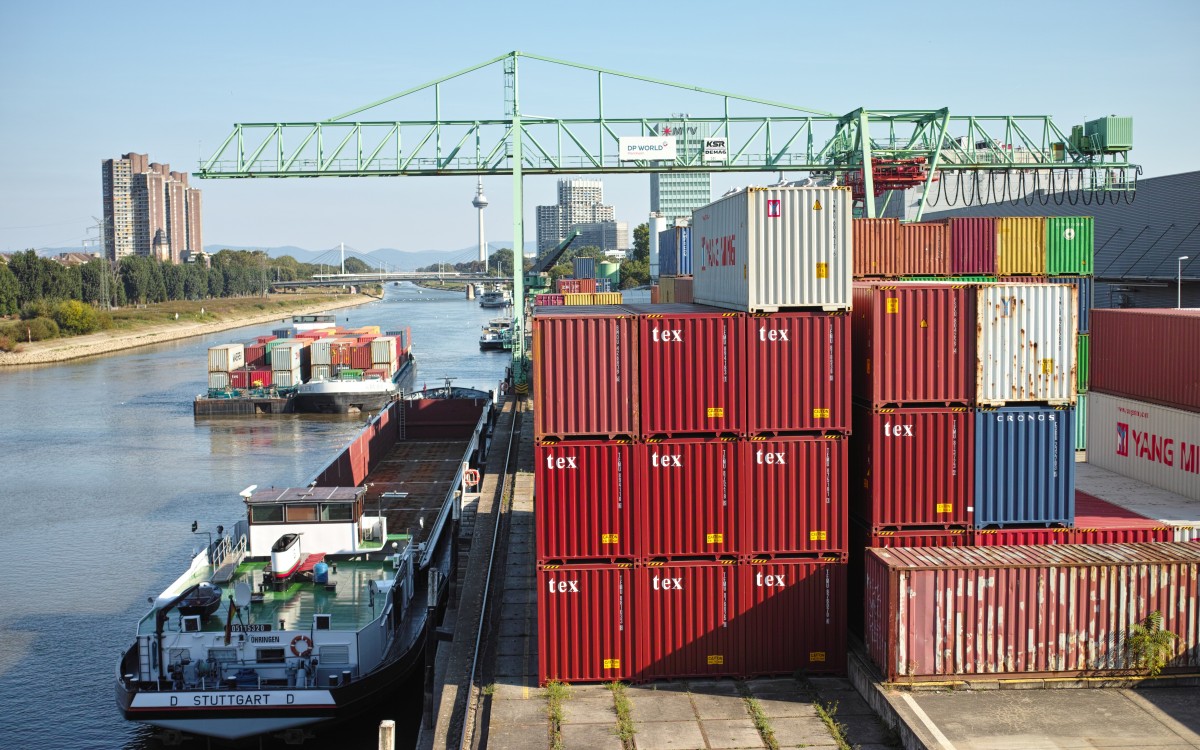Economic effects of adapting critical infrastructure (sea port and inland water transport)

The case study will focus on the port of Hamburg and the port of Mannheim, and actors using the ports.
Status report, October 2021
Introduction
The case study will focus on the port of Hamburg and the port of Mannheim, and actors using the ports. In addition to handling goods, the Port of Hamburg is site for industrial production and raw material processing, and is currently the largest inner-city urban development project in Europe. The port of Mannheim is one of the most important and largest inland ports in Europe, and is home to numerous large companies in sectors such as energy, chemicals and pharmaceuticals.
By the end of 2020, the Mannheim part of the study has reached a first milestone. Two impact chain workshops have been conducted as participative online events. One workshop investigated the risk of extended periods of heat on the population of Mannheim and vulnerable groups. Stakeholders have been the professional firefighters of Mannheim and several offices of the City of Mannheim municipality. The second impact chain workshop was a multi-threat, multi-stakeholder workshop. The participants investigated the risk of more frequent and longer summer periods of drought and low water of the river Rhine on the infrastructure of Mannheim. The Mannheim port authority, the Mannheim large fossile power plant, a logistics company, a company producing products based on pulp, and the City of Mannheim contributed to creating a qualitative impact chain. In both cases, the starting point was the German national set of general impact chains as published in 2016. For the Mannheim cases, the relevant parts have been selected and then refined. The planned next step of the case study will be the identification of possibilities for further quantitative analyses.
Case content
In Case Study 3, the Fraunhofer team investigated environmental and economic effects of re-peated long periods of heat, drought and of low water of the river Rhine, Europe’s most im-portant inland waterway, on the city of Mannheim, with a focus on the Rhine port of Mannheim and actors using the port. The port of Mannheim is one of the most important and largest inland ports in Europe and is home to numerous large companies in sectors such as energy, chemicals and pharmaceuticals. The study engaged with local industrial and public stakeholders and fo-cused on assessing the impacts of long periods of heat, drought and of low water, related risks and potential damages as well as potential cost of damages and possible adaptation measures to the infrastructure and industry (power generation, inland water transport, supply chains, etc.) as well as the vulnerable population in Mannheim.
For implementing the case, stakeholder dialogues and workshops for co-production of regional Impact Chains were conducted. Two Impact Chains were developed during the case study. One visualizing the impact of drought and heat on the (vulnerable) population in Mannheim and one visualizing the impacts of the low water periods of the river Rhine on the port and affected ac-tors. A quantitative risk assessment focusing on the economic effect of low waters of the Rhine River on costs of transporting freight via inland waterway was conducted for one industrial or-ganisation. Furthermore, it was shown how to combine different levels of analysis scales, by uti-lizing relevant parts of existing German national Impact Chains, building regional Impact Chains based on these parts, and pinpointing risk factors from the regional Impact Chains to corporate units, processes, and activities (the corporate Value Chain).
A final workshop with interested stakeholders was held in October 2022 to present outcomes of the case study and to offer the chance for stakeholders to explore future adaptation activities and cooperations. Main outcomes of the case study were compiled and submitted as a paper (link/info to the paper?) for the UNCHAIN paper collection presenting the project outcomes (link/info to the collection?). In addition, a summary of the case study can be found here Insert LINK to D3.4.
Research Innovations
The research and innovation objectives of the study were improving methods for assessing eco-nomic effects and creating a basis for assessing potential cascading effects. The study resulted in the following innovations:
• Using parts of national Impact Chains as a starting point for regional and local Impact Chain creation.
• Mapping risk factors from Impact Chains to corporate business Value Chains.
Furthermore, the study yielded the following results regarding the co-development of knowledge:
• Co-development of regional and individual (per stakeholder defined exposure) climate risk factors related to more frequent and extended periods of heat, drought, and low wa-ters of the Rhine River;
• co-development of regional Impact Chains that are consistent with the German national Climate Impact Chains;
• cooperative mapping of risk factors (sensitivities, capacities, impacts) from regional Im-pact Chains to Value Chains of single stakeholder organisations;
• cooperative assessment of economic effects of low waters of the Rhine River on one or-ganisation.
Study areas
• Climate change-induced risks to and their socio-economic effects on infrastructure, with a focus on energy generation and inland waterway freight transport, and population in the area of Mannheim, Germany.
• Climate change-induced threats: more frequent and extended periods of heat, drought, and low waters of the Rhine River.
Stakeholders involved
The case study involved industrial and public stakeholders related to the Mannheim area: munic-ipal departments (Climate Office, Economic and Structural Development, Urban Development, Public Health Office, Professional Firefighters), state-owned Rhine-Neckar Port Authority, logis-tics company, energy producing company, sanitary paper production company, German Federal Institute of Hydrology.
Summary data collection
* Qualitative data has been gathered through stakeholder dialogues and workshops.
* Quantitative data, such as socio-demographic, socio-economic and environmental data, has been partly
* collected from various open government data portals and other freely and openly available sources,
* provided by stakeholders, and
* provided by a federal institute.
Results
1) Final documented output:
• Two Impact Chains validated by stakeholders (one Impact Chain was incorporated in the heat action plan of the City of Mannheim);
• individual risk factors mapped to the Value Chain of one industrial stakeholder, relat-ed Value Chain model and related risk analysis;
• Excel tool for estimating additional waterway transportation costs based on charac-teristics of low water at the Rhine River;
• case description including information of historic and prognosed low water situation of the river Rhine.
2) Added value for stakeholders:
• better understanding of the risk of extended periods of low water of a major Europe-an / German inland waterway on their supply chain and the regional infrastructure and industry;
• better understanding of the risk of extended periods of drought, heat, and low waters of the Rhine to the population and community facilities of the Mannheim region.
3) Methodological improvements of the Impact Chain-based climate risk and vulnerability assessment:
• improved consequence analysis,
• improved cascading effects analysis,
• method for connecting Impact Chains with more general risk analysis methods.
4) Good practices in stakeholder engagement, co-production of knowledge, and presenta-tion of results.
Case study responsible
Fraunhofer-Gesellschaft zur Förderung der Angewandten Forschung (FhG)
Contact
Documentation
Economic effects of adapting critical infrastructure in the Mannheim metropolitan area (german)
